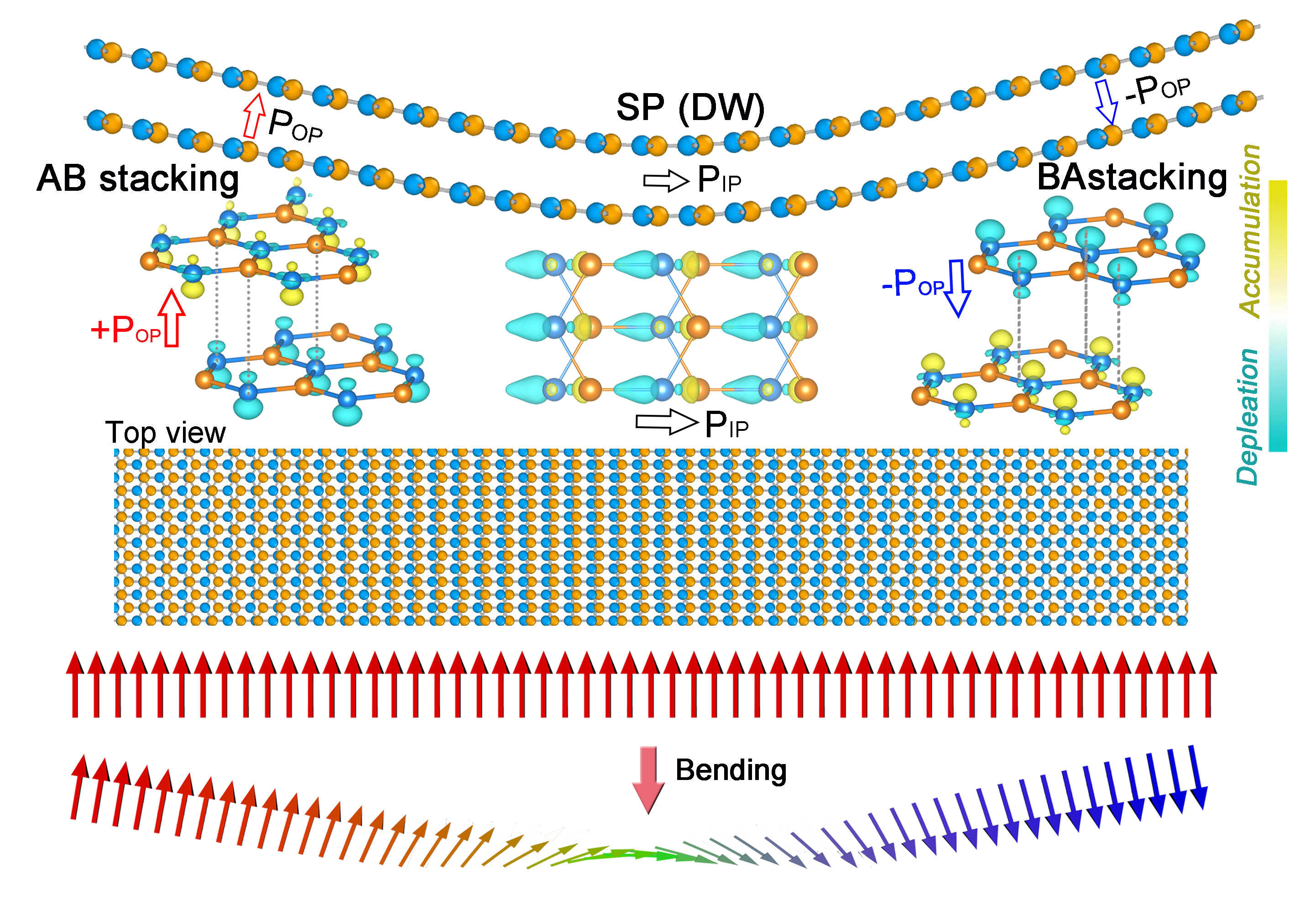
A research group from the Ningbo Institute of Materials Technology and Engineering (NIMTE) of the Chinese Academy of Sciences has proposed a new strategy to precisely manipulate interlayer stacking orders and related properties in two-dimensional (2D) van der Waals layered materials via mechanical bending, enabling efficient electric polarization switching. This study was published in Physical Review Letters.
2D van der Waals materials have gained attention in flexible electronics due to their ability to conform and mechanical flexibility. Composed of atomically thin layers, 2D materials possess a unique capacity for interlayer stacking. By modifying this stacking order, various phases can be achieved, which unlocks extraordinary electrical, optical, and magnetic properties. However, achieving precise control over stacking orders in 2D materials is challenging.
To tackle this issue, the researchers proposed a novel mechanical bending method to dynamically control stacking orders and related optical, topological, electronic, and magnetic properties in 2D materials. In previous work, the team developed machine learning force field models for 2D materials such as h-BN and MoS2, using an artificial intelligence-assisted approach.
In this study, the researchers carried out large-scale atomic simulations on bilayer materials like h-BN, MoS2, and non-ferroelectric bilayer graphene, based on their earlier force field models. They found that bending the materials creates irreversible kinks, a phenomenon arising from the interaction between interlayer stacking energy and bending energy.
During the bending process, continuous interlayer sliding occurs due to the high in-plane rigidity of 2D materials. Through atomic relaxation, three optimized bilayer structures with distinct bending angles were developed, resulting in the formation of different types of domain walls.
Importantly, the sliding induced by bending facilitates interlayer charge transfer, which can reverse the electric polarization of the materials. Since the stacking order plays a crucial role in modulating material properties, the mechanism of bending-induced interlayer sliding can be employed to explore "sliding flexo-responses" in van der Waals materials. This includes effects such as sliding flexomagnetic, sliding flexophotovoltaic, and sliding flexovalleytronic, thus opening new avenues for the design of next-generation flexible electronics.
This study was funded by the National Key R&D Program of China, the National Natural Science Foundation of China, and other organizations.

Atomic configurations and polarization textures in bent bilayer h-BN (Image by NIMTE)

86-10-68597521 (day)
86-10-68597289 (night)

52 Sanlihe Rd., Xicheng District,
Beijing, China (100864)

